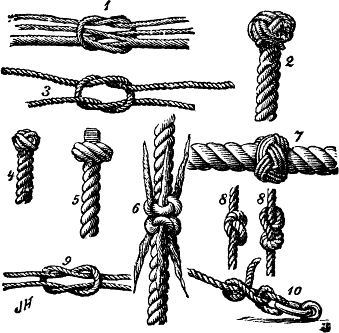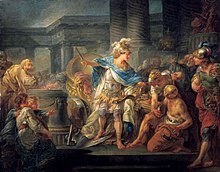1) any of various fastenings formed by looping and tying a rope (or cord) upon itself or to another rope or to another object. 2) imbedded remnant of a branch in a tree or cut timber. often harder than surrounding wood.
A knot is an intentional complication in cordage which may be practical or decorative, or both. Practical knots are classified by function, including hitches, bends, loop knots, and splices: a hitch fastens a rope to another object; a bend fastens two ends of a rope to each another; a loop knot is any knot creating a loop; and splice denotes any multi-strand knot, including bends and loops. A knot may also refer, in the strictest sense, to a stopper or knob at the end of a rope to keep that end from slipping through a grommet or eye. Knots have excited interest since ancient times for their practical uses, as well as their topological intricacy, studied in the area of mathematics known as knot theory.

- Yarn knot (ABoK #2688)
- Manrope knot (ABoK #847)
- Granny knot (ABoK #1206)
- Wall and crown knot (ABoK #670, #671)
- Matthew Walker's knot (ABoK #681)
- Shroud knot (ABoK #1580)
- Turk's head knot (ABoK #1278-#1397)
- Overhand knot, Figure-of-eight knot (ABoK #514, #520)
- Reef knot, Square knot (ABoK #1402)
- Two half-hitches (ABoK #54)






